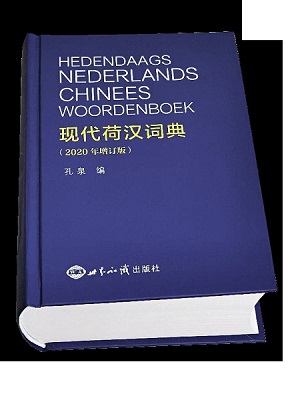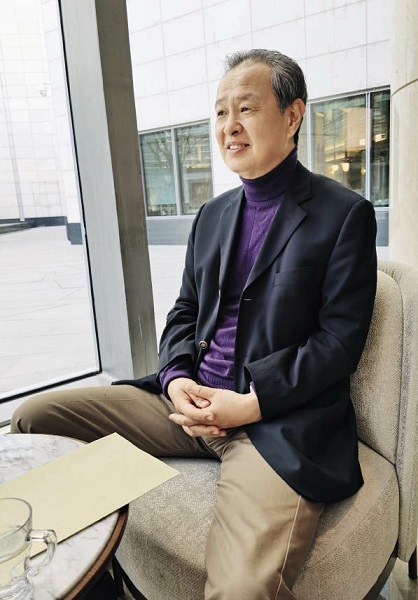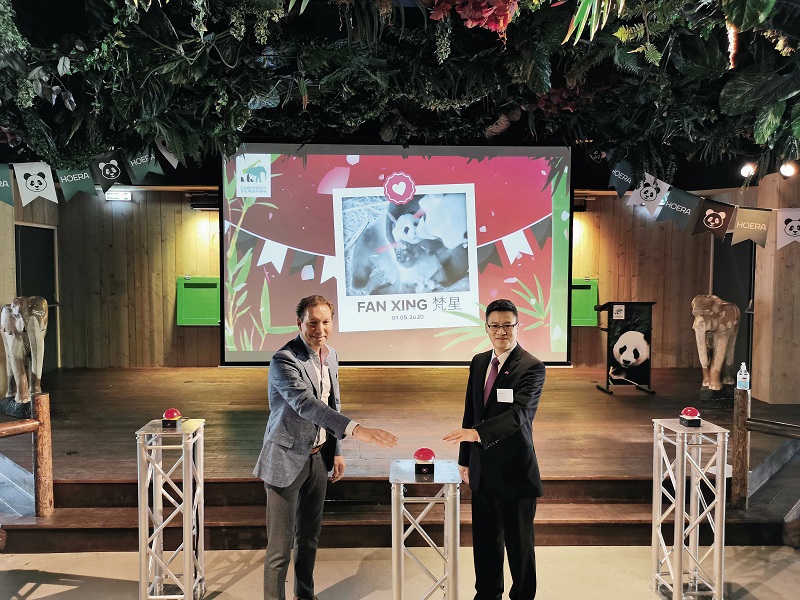
The first edition of the Modern Dutch-Chinese Dictionary was published in 1995 and an updated edition was published by the World Affairs Press in 2020. More than 8,700 new entries have been added to the dictionary compiled by a senior Chinese diplomat. The whole book contains a total of 67,000 entries and nearly 100,000 definitions, covering vocabulary from 60 different industrial fields. It is currently the largest Dutch-Chinese bilingual dictionary in China.
Kong Quan, lexicographer of the dictionary, has been working as a diplomat since 1973. He has served as director of the information department of the Ministry of Foreign Affairs, spokesperson of the Ministry of Foreign Affairs, director of the ministry’s European department, and Chinese ambassador to France and the Principality of Monaco. He is currently deputy director of the Committee of Foreign Affairs of the 13th CPPCC National Committee.
The three editions of the dictionary since its first compilation spanning nearly four decades have reflected changes of the times.

Kong Quan, senior Chinese diplomat and also the lexicographer of Modern Dutch-Chinese Dictionary.
Increasing Exchanges Generate Huge Demand for Dictionaries
In 1973, 18-year-old Kong went to Belgium to learn Flemish (the old name of Belgian Dutch) and studied it while working at the Chinese embassy stationed there. At that time, since there were few exchanges between China and Europe, information was blocked, and language learning tools for lesser spoken European languages were scarce. “Back then, there was no Dutch-Chinese dictionary. I could only learn through Dutch-English and Dutch-French dictionaries, which was very difficult,” Kong recalled.
In 1976, Kong was officially dispatched to the Chinese Embassy in the Kingdom of Belgium. At that time, the embassy was located near Waterloo, a dozen kilometers from Brussels, in a remote location where life was monotonous. Then a novel idea struck the young foreign affairs worker: “Why not take time to compile a Dutch-Chinese dictionary to fill the gap in this field?”
Kong soon realized the hardships of that task after he devoted himself to the compiling work. It was complicated and boring. Luckily he received valuable support from Chen Yuan, then editor-in-chief and general manager of the Commercial Press. This famous publisher and linguist wrote a letter to Kong, expressing firm support and warm encouragement to the young man. This letter greatly motivated Kong to complete the compilation of the dictionary.
From the 1980s to the early 1990s, Kong spent almost all his spare time on this endeavor. With the encouragement of Chen Yuan and the help of two colleagues, he completed the compilation of the third draft of the dictionary, which was then officially published in 1995. This was also China’s first Dutch-Chinese bilingual dictionary.
In the 1980s and 1990s, after several oil crises, the Netherlands entered a period of sustained economic growth. Many Chinese went to the Netherlands to seek job opportunities. People-to-people, economic, and trade exchanges between the two countries became increasingly close, causing a surge in the demand for translation. Kong Quan’s dictionary was not only popular among Dutch learners, but also used as an essential tool by the Dutch government as a gift to Chinese naturalized in the Netherlands.
With its increasing popularity, the Modern Dutch-Chinese Dictionary, which was originally printed in small quantities, was soon in short supply. Some enterprising people saw the shortage as “business opportunities,” printing pirated editions, some of which even ended up being mixed in with the copies donated by the Dutch government. In order to meet the soaring market demand, the revised edition was published in 2003.
With the development of Sino-European relations, the number of Chinese expatriates and Chinese students in the Netherlands have increased significantly. Today there are 200,000 overseas Chinese in the Netherlands, and more than 10,000 Chinese students; there are also thousands of Dutch people studying, working, and living in China. Due to the short supply, the first two editions of the Modern Dutch-Chinese Dictionary have been sold out and are now found on online book-selling platforms, sold at a price ten times higher than its listed price. The highest price has even reached RMB 8,000.

On August 14, the Dutch Ouwehands Zoo holds a 100-day and name day celebration ceremony for a panda cub born in the Netherlands. Chen Ribiao, charge d’affaires of the Chinese embassy in the Netherlands, attends the event and together with the Dutch side unveils the name for the baby panda: Fan Xing.
Updated with the Times
“The vitality of language comes from the emergence of new vocabulary. Over the past 10 years, through annual revisions, thousands of new entries were added to the dictionaries of European and American countries. The Modern Dutch-Chinese Dictionary should also keep pace with the times,” Kong said. During the COVID-19 pandemic, making use of the time at home, he verified and corrected the spellings and interpretation of all entries in the dictionary based on the Dutch language reform implemented by the Dutch government, and referred to many new versions of the dictionaries commonly used in the Netherlands. More than 8,700 new terms that have come into usage over the last ten years have been added.
In the newly released edition, “COVID-19 epidemic,” “regulations to prevent COVID-19,” and other new terms have been included. There are countless examples, in which the characteristics of the current era are displayed clearly for the readers.
During his work of compiling the third edition of the dictionary, Kong felt more deeply the changes brought about by China’s opening-up and the integration and mutual learning with the world. For example, concepts or phenomena such as “sponge city” and “carpooling” did not appear in China in the 1990s. While translating the related Dutch terms back then, Kong could only use lengthy sentences to explain them. Nowadays, the Chinese vocabulary has been updated in sync with the rest of the world, and therefore definitions of new terms have become more vivid and appropriate.
Exchanges Promote Inclusive Development of Cultures
The year 2020 marks the 45th anniversary of the establishment of diplomatic relations between China and Europe. Kong Quan’s diplomatic career started almost at the same time as the establishment of the aforementioned relations. He witnessed the continuous deepening of China-EU relations. The number of EU members has increased from nine when the two sides established diplomatic relations to 27 now. In 2020, China became the EU’s largest trading partner. The annual two-way personnel exchanges between China and Europe have exceeded eight million. The depth and breadth of China-EU exchanges are unprecedented.
However, the EU-China: A Strategic Outlook report released by the European Union in 2019 stated that China is still a partner in diplomacy, but China is a competitor in key hi-tech areas such as 5G and in terms of governance models, China is dubbed as an “institutional opponent.”
As for Kong Quan, he believes this outlook is actually a deviation in the understanding of China’s sustainable development by some people in the EU institutions, which has resulted in triggering a series of restrictions on Chinese investment afterwards, leading to a decline in the enthusiasm of some Chinese companies to invest in Europe. For these issues concerning the long-term relationship between the two sides, it is necessary to face and deal with them through policy elaboration and communication, and to further enhance mutual understanding and mutual trust through people-to-people and cultural exchanges. Language is an important link.
The updated version of the Modern Dutch-Chinese Dictionary also received support from COSCO Shipping. Kong said, “More than 40 years ago, the number of COSCO’s annual cargo ships traveling to the Netherlands was six at the most. Today, COSCO shipping and the Port of Rotterdam have joined hands to promote cooperation projects in various forms and a mutually beneficial relationship. More than 20 fully loaded cargo ships commute between the port and Chinese destinations every month, contributing to the construction of the Belt and Road and China-Europe exchanges. They look forward to expanding the field of cooperation with the Netherlands and are very supportive of the update and publication of this dictionary.”
Wim Geerts, the Dutch ambassador to China, said in his preface to the dictionary, “Language is one of the most specific points of contact between two cultures. While reading the dictionary, it seems to be immersed in cultural exchanges.” He further added, “We must constantly revise it. With continuous exchanges, this dictionary can play its role as a limited resource to create endless opportunities. Because only as we can communicate with each other can we deepen mutual understanding and recognition, achieve mutual respect, mutual trust, mutual help, and mutual prosperity.”
“Mutual understanding is the foundation of friendship, and mutual trust is the guarantee of cooperation,” Kong said. Today there are more than 3,000 Chinese companies investing in Europe. “I hope these companies not only pay taxes and provide employment in their host countries, but also promote cultural exchanges as a booster for the development of China-EU relations,” he said.
Kong is fluent in French and Dutch, and can also use English and German. Years of overseas work experience allowed him to appreciate the richness, exquisiteness, and unique expression of different languages.
There are more than 50 official languages in 65 countries along the Belt and Road. Kong believes that with the expansion of China’s foreign exchanges and cooperation, the demand for learning minor languages has increased rapidly, but China’s domestic resources and investment in learning these languages are far from sufficient. “To achieve truely deep emotional communication and appreciation of different cultures, it is still necessary to learn and master the language of the target country.”
“China has become a major manufacturing country and has all the industrial categories listed in the United Nations Industrial Classification,” Kong indicated, and went on to say, “As an ancient civilization, I hope that China will also become the country that masters and understands the most languages of the world, be counted among the most respectful of other civilizations and thus be able to stand at the forefront of cultural exchanges.
LU MEI is a reporter with chinanews.com.